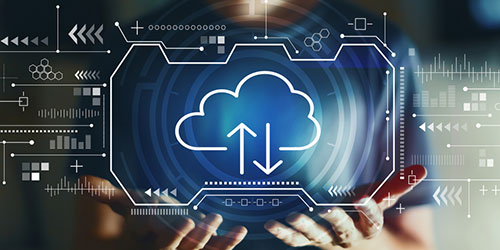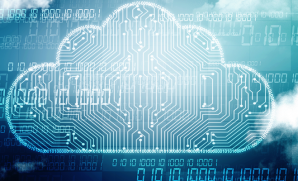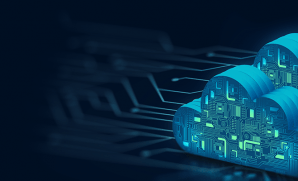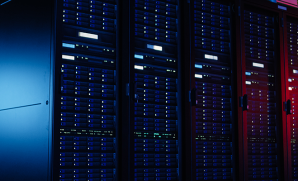How Cloud and Edge Infrastructure Innovations Enable Breakthrough Efficiency, Flexibility, and Performance Gains
Publish Date: September 19, 2023The past few years have witnessed an explosion in cloud adoption, and the trend shows no sign of slowing down. According to Forrester, over 90% of North American businesses use at least one cloud computing service, with the US at 94% and Canada at 88%.
While cloud computing has already significantly impacted, the emergence of edge infrastructure opens up even more possibilities. In this article, we will explore how cloud and edge infrastructure innovations are driving these benefits.
Importance in Modern Computing
Cloud computing focuses on delivering computing resources such as servers, storage, and software over the Internet, and edge computing allows data processing closer to the data source rather than relying on centralized cloud servers using a distributed computing model.
Cloud and edge technologies are not mutually exclusive. They must be integrated with modern applications comprising various services or microservices. As a result, some services can run in the cloud while others will be distributed across the edge. Establishing strong connections between the cloud and edge is essential to ensure smooth communication between these services, with high scalability, reliability, bandwidth, and low latency.
Impact of Cloud and Edge
The combination of cloud and edge provides a solution that balances the benefits of both models. Edge infrastructure can handle data processing tasks that require low latency and high bandwidth, while the cloud can handle workloads that require scalability, agility, and cost-effectiveness.
For instance, edge infrastructure can be used in the transportation industry to process sensor data from autonomous vehicles. In contrast, the cloud can be used for data analytics, enabling businesses to optimize their operations. In healthcare, edge infrastructure can process patient data from medical devices, while the cloud can be used for data analytics, enabling doctors to make better decisions.
Though the benefits of cloud and edge infrastructure are many, there are potential challenges and risks that businesses must be aware of. Edge can be more difficult to manage and secure, and companies must ensure that their infrastructure is appropriately configured to prevent unauthorized access. However, with proper planning and implementation, these challenges can be mitigated.
The Who and What of Cloud and Edge
As per Fortune Business Insights, the global edge computing market was valued at $11.99 billion in 2022 & is projected to grow from $15.96 billion in 2023 to $139.58 billion by 2030. The market is poised for consolidation and evolution for edge computing solutions. As edge computing becomes more widespread, many products and providers will likely offer edge computing solutions, some of which will be more successful. Experts suggest this confusion over ‘who and what’ will sort itself out, with some solutions becoming more widely adopted and others falling by the wayside.
It is also imperative to note that hyper-scale cloud providers are better-positioned to provide edge computing solutions “given their centralized, cloud-hosted management coupled with a growing portfolio of common cloud and edge capabilities.” However, despite their advantages, hyper-scale cloud providers are expected to account for only 20% of installed edge computing platforms by the end of 2023. This indicates that there is room in the market for other providers. Organizations may consider different factors when selecting an edge computing solution beyond choosing a well-known provider.
Looking Ahead
As edge technology evolves, a smaller number of standard patterns will likely emerge, supported by cloud providers and specialized edge solutions.
Gartner says businesses must prioritize a distributed cloud-based solution as the default approach for edge computing. This means that enterprises should look to build partnerships and ecosystems rather than relying solely on a single vendor. This approach can help future-proof edge solutions and ensure they remain flexible and adaptable as the technology landscape evolves.
Also, in highly distributed environments, cloud and edge infrastructure help scale business operations while maintaining consistency, availability, and security across all locations where workloads run. This allows organizations to keep their total cost of ownership as low as possible.
The future outlook for cloud and edge infrastructure is also heavily influenced by several emerging trends and technologies, including a renewed focus on security, the growing importance of AI/ML, the rise of cloud-native applications, and the increasing adoption of serverless computing.
As the threat landscape evolves, cloud providers will continue to invest heavily in security features. With the challenges edge computing poses, in particular, edge security solutions using blockchain technology for data integrity and decentralized authentication protocols will come to mainstream usage.
AI/ML models require vast data and computing power, making the cloud an ideal model training and development platform. On the other hand, edge computing can deploy these models closer to the data source, enabling faster response times and reducing the need for data transfer. This convergence of AI/ML and cloud/edge infrastructure will drive innovation in IoT applications, autonomous vehicles, predictive maintenance, robotics & automation, and smart cities.
Cloud-native applications are designed to run in the cloud using containers, microservices, and other modern architectures. Cloud-native technologies such as Kubernetes are being used to manage containerized applications at scale. At the same time, edge frameworks from “The Linux Foundation,” like Home Edge, Akraino, EdgeX Foundry, Fledge, Open Horizon, etc., are being developed to manage edge applications. The convergence of cloud and edge infrastructure leads to the development of hybrid cloud architectures that can seamlessly run cloud-native applications across both environments.
It will be interesting to see the adoption of Edge infrastructure across various verticals viz, Industrial Manufacturing, Energy (Oil, Gas & Utilities), Commerce and retail, Automotive, Fleet and transportation, Logistics, Building Automation, Cities and government, Healthcare and even our own Homes for different use cases.

















